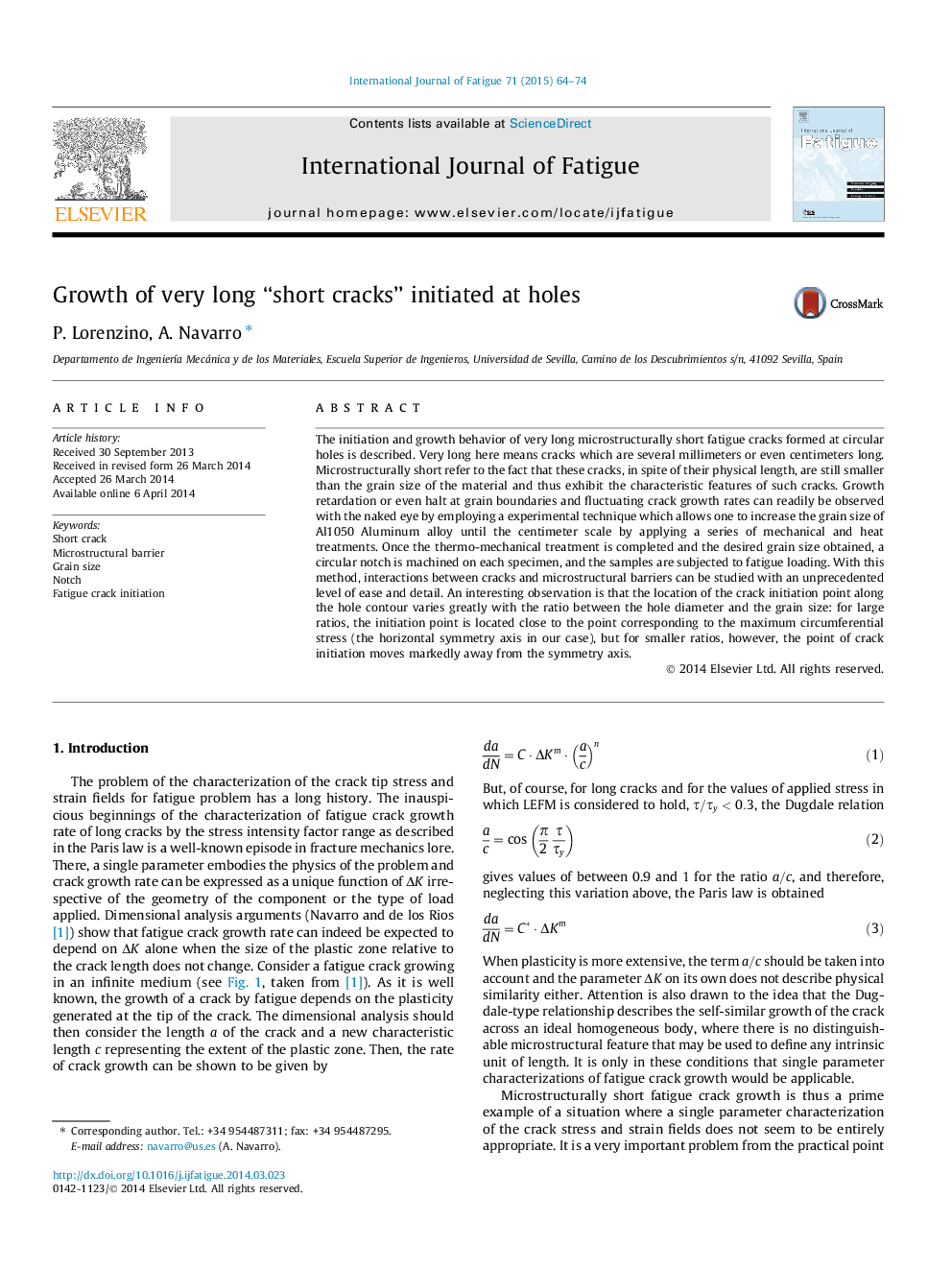| Article ID | Journal | Published Year | Pages | File Type |
|---|---|---|---|---|
| 775074 | International Journal of Fatigue | 2015 | 11 Pages |
•Very long “short” fatigue cracks formed at circular holes are studied.•Very long here means cracks which are several millimeters or even centimeters long.•Short means that these cracks are still smaller than the grain size of the material.•Large grain sizes obtained by heat treatments and cold working in pure aluminum.•Location of crack initiation along hole contour depends on hole to grain size ratio.
The initiation and growth behavior of very long microstructurally short fatigue cracks formed at circular holes is described. Very long here means cracks which are several millimeters or even centimeters long. Microstructurally short refer to the fact that these cracks, in spite of their physical length, are still smaller than the grain size of the material and thus exhibit the characteristic features of such cracks. Growth retardation or even halt at grain boundaries and fluctuating crack growth rates can readily be observed with the naked eye by employing a experimental technique which allows one to increase the grain size of Al1050 Aluminum alloy until the centimeter scale by applying a series of mechanical and heat treatments. Once the thermo-mechanical treatment is completed and the desired grain size obtained, a circular notch is machined on each specimen, and the samples are subjected to fatigue loading. With this method, interactions between cracks and microstructural barriers can be studied with an unprecedented level of ease and detail. An interesting observation is that the location of the crack initiation point along the hole contour varies greatly with the ratio between the hole diameter and the grain size: for large ratios, the initiation point is located close to the point corresponding to the maximum circumferential stress (the horizontal symmetry axis in our case), but for smaller ratios, however, the point of crack initiation moves markedly away from the symmetry axis.
